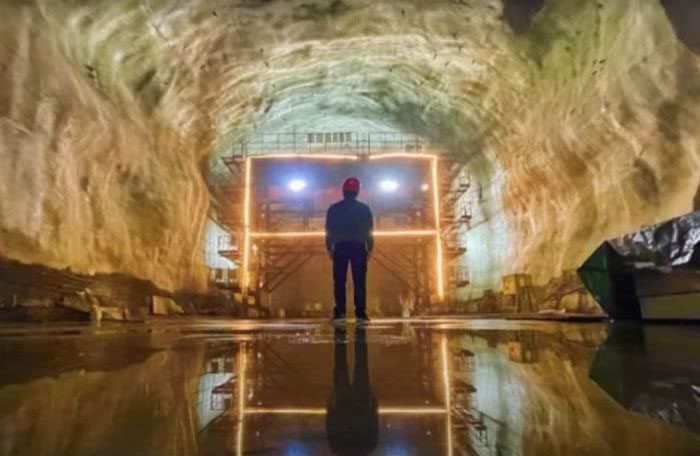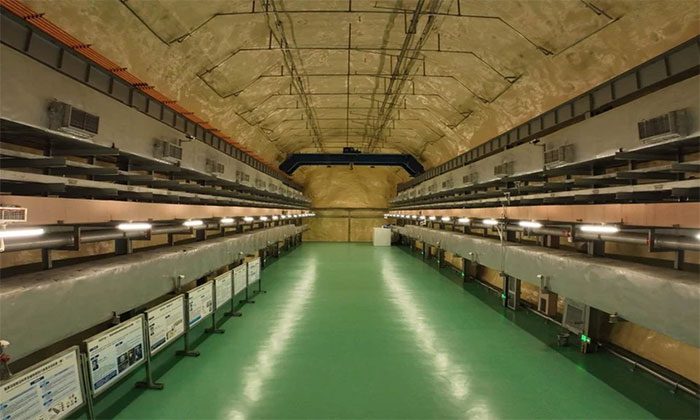According to Xinhua News Agency, on December 7, China inaugurated and put into operation the world’s deepest and largest underground scientific laboratory.

Inside the underground laboratory located in Ganbing, Sichuan, China.

China’s Ganbing Scientific Laboratory. (Photo: THX)
Situated at the foot of Ganbing Mountain in the Liangshan Yi Autonomous Prefecture, Sichuan Province, the Ganbing Underground Research Facility (DURF) is built at a depth of 2,400 meters, with a total volume of 330,000 cubic meters.
The cosmic ray flux in the laboratory is only 1/100 millionth of that at the Earth’s surface, offering numerous advantages such as extremely low environmental radon levels, minimal background radiation, and ultra-low cosmic ray flux, along with ultra-clean space. These features will enhance the ability to detect dark matter.
According to scientists, visible matter makes up only about 5% of the universe, while approximately 95% consists of dark matter and dark energy.
A total of 10 research project groups from universities and research institutes, including Tsinghua University, Shanghai Jiao Tong University, Beijing Normal University, the China Institute of Atomic Energy, and the Wuhan Institute of Rock Mechanics (Chinese Academy of Sciences), will conduct scientific experiments at this laboratory.
Currently, several teams are already present at DURF to carry out their research.

Entrance to the tunnel leading to the Ganbing Underground Laboratory. (Photo: Xinhua)
DURF is identified as an important national facility and will evolve into a world-class scientific research center in the future, encompassing interdisciplinary areas such as particle physics, nuclear astrophysics, cosmology, life sciences, and rock mechanics. This will significantly contribute to advancing China’s scientific innovation.


















































